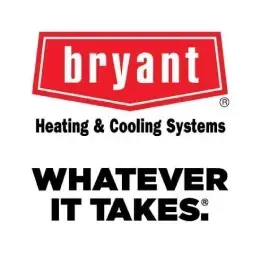Blog
A Superior Air Conditioning Company Blog
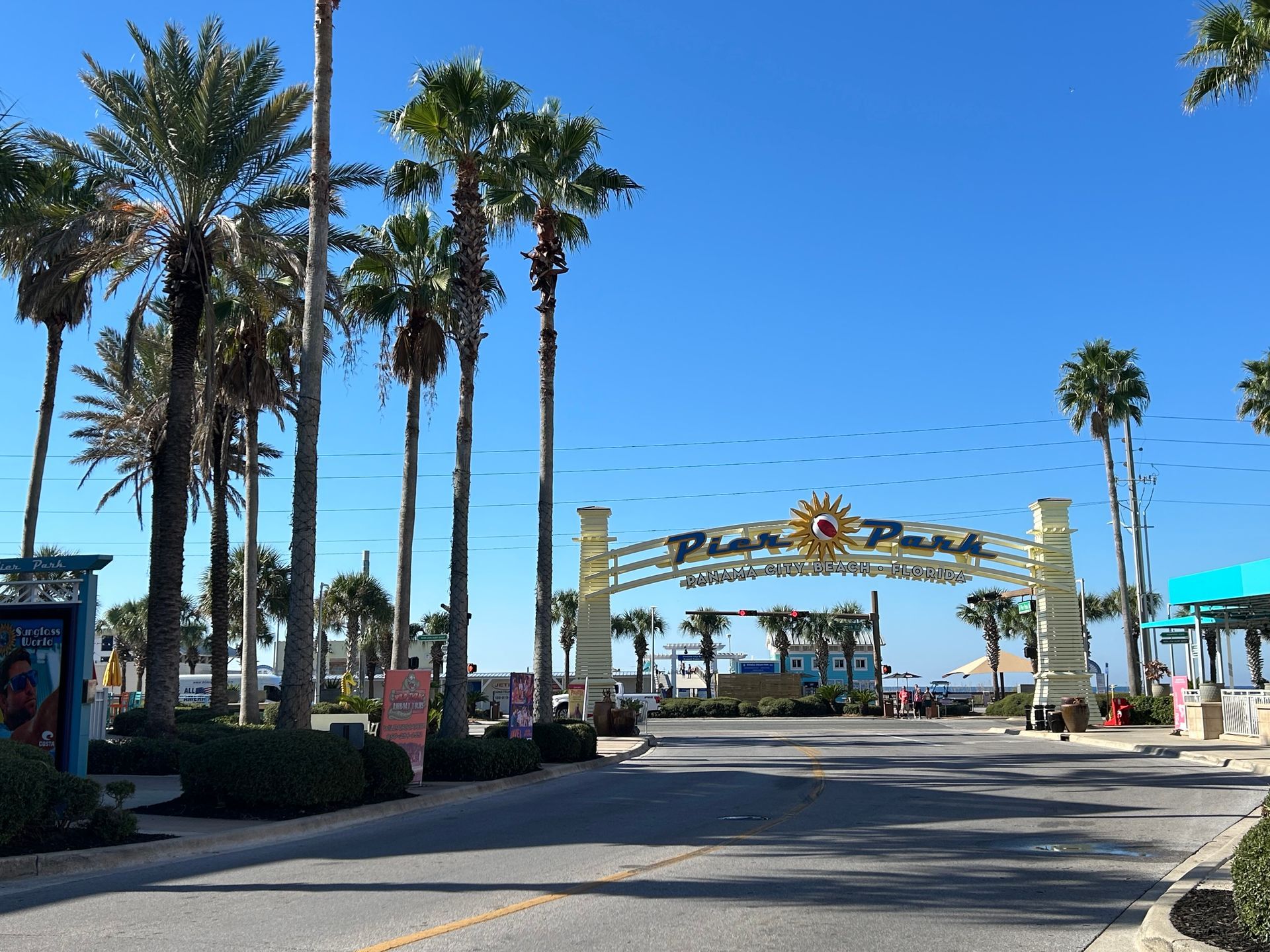
Coastal life around Panama City, Panama City Beach, 30A, and the Gulf Coast comes with a hidden HVAC tax: salt, sand, and relentless humidity. Left unchecked, they shorten equipment life, raise energy bills, and trigger midsummer breakdowns. Here’s what’s happening to your system—and how to stop it. Why corrosion speeds up near the coast! Salt aerosol from the Gulf rides the breeze as a fine mist. When it settles on your outdoor condenser, it mixes with humidity and forms a thin, conductive film. That film drives galvanic corrosion where dissimilar metals meet (aluminum fins, copper tubing, steel fasteners). Repeated wet/dry cycles —foggy mornings, sunny afternoons—accelerate pitting on coils and rust on cabinets and hardware. At the same time, sand and fine debris lodge in the coil’s fins. That clogs airflow, forces the compressor to work harder, and traps salty moisture against the metal—multiplying corrosion and choking efficiency. Early warning signs White, chalky residue or dark spots on coil fins Rusted screws, fan guards, or cabinet edges Louder outdoor unit, longer run times, or poor cooling on hot afternoons Refrigerant leaks from pitted coils (often after a storm season) How to protect your AC (what works on the Gulf) Choose coastal-rated equipment. Factory ecoat/epoxycoated coils , stainless or coated hardware, sealed electrical compartments, and UV resistant paint stand up better to salt air. Rinse with fresh water—regularly. With power off , hose the condenser top to bottom monthly in season and after storms . Avoid pressure washers and harsh chemicals; they bend fins and strip protective layers. Apply professional coil coatings (when appropriate) . After a deep clean and neutral rinse, a compatible coating adds years of protection. (The wrong product can insulate the coil—use HVAC specific coatings only.) Elevate, anchor, and place wisely. Install on a composite pad with proper drainage and hurricane tiedowns. Keep clear of irrigation spray and use a codecompliant wind break or fence to deflect direct salt spray - while maintaining manufacturer clearances for airflow. Stop the sprinkler and string trimmer damage. Redirect heads and add a guard to prevent constant wetting and nicked fins. Schedule coastal maintenance. Biannual tuneups plus quarterly freshwater rinses near the beach. We clean coils, treat drains, verify airflow/static pressure, and check coating integrity. Mind the ductwork and filters. Salt and sand that enter through leaky returns or clogged filters end up on the indoor coil. Seal returns in attics/garages and keep to a 1–3 month filter cadence. What not to do Don’t bag the condenser in plastic. It traps moisture and accelerates corrosion. Don’t use acidic cleaners or bleach. They can attack aluminum and protective coatings. Don’t ignore small rust spots. Surface rust spreads; touchups and hardware swaps are cheap insurance. Your coastal plan, done right A Superior Air Conditioning Company specifies coast already systems, applies compatible coil coatings, sets placement to reduce salt exposure, and builds a maintenance schedule that fits your proximity to the surf. Want a quick coastal assessment for your home or rental? We’ll document risks, estimate remaining life, and outline a plan that keeps you cooler, longer—without paying the corrosion tax. Performing HVAC Maintenance Where There’s Lots of Sand in Coastal Florida A Superior Air Conditioning Company Along Florida’s coast, sand + salt + humidity is a tough trio for HVAC systems. Grit works its way into coils and cabinets, sand drifts restrict airflow, and salty moisture accelerates corrosion. The result can be higher bills, hot rooms, and midsummer breakdowns—unless you maintain with the coast in mind. Here’s a practical plan from A Superior Air Conditioning Company to keep systems clean, efficient, and storm-ready. Start with safety and basics Always shut off power at the thermostat and breaker before outdoor cleaning. Keep 2–3 feet of clearance around the condenser. In sandy yards, use a firm base (composite or concrete pad) and consider pea gravel rather than mulch, which can blow into the coil. Keep sand off the outdoor coil Monthly freshwater rinse (in season): With power off, hose the coil top to bottom to wash out sand and salt. Skip pressure washers and harsh chemicals; they bend fins and strip protective coatings. Deflect the grit: Reaim sprinklers and leaf blowers away from the unit. If wind funnels sand directly at the condenser, add a codecompliant wind break or louvered fence , preserving manufacturer clearances. Cabinet touchups: Surface rust spreads fast near the coast. Lightly clean, dry, and touch up paint or replace corroded screws with coated/stainless hardware. Control sand at the return—filtration that fits Sand that bypasses doors and windows winds up in your return duct and on the indoor coil. Use a properly sized filter with a snug fit. Start with MERV 8–11; only step up to MERV 13 if your system can handle the added resistance. Change filters more often in peak season—monthly is common near beaches. Label sizes and dates on the return grille. Seal gaps around return boxes and avoid double filtering (a filter at the grille and at the air handler) unless a tech verifies airflow is still healthy. Protect the coil and drain inside Evaporator coil cleanliness is key to moisture removal. If you see ice, heavy dust, or musty smell at vents, schedule a professional coil cleaning. Keep the condensate line clear : pour a cup of white vinegar into the clean out every month; confirm steady drip at the outlet. Add float switches to prevent overflow during heavy use. Ducts and rooms that collect sand Entry areas, garages, and beachside rooms can load the system with grit. Seal and support flex duct in the attic so it doesn’t suck in hot, sandy air through tears or loose collars. Insulate metal boots and seal ceiling gaps with mastic/UL181 foil tape (never cloth duct tape). Use door mats and shoe zones to reduce tracked sand; it truly helps filters and coils last longer. Seasonal tuneups that pay back A coastal tuneup with A Superior Air Conditioning Company includes coil rinses, electrical and safety checks, static pressure and temperature split readings, drain treatment, and a corrosion review. For homes closest to the beach, we often recommend quarterly coil rinses and, when appropriate, HVAC safe coil coatings. What not to do Don’t bag the condenser in plastic; it traps salty moisture. Don’t run the fan on ON continuously; it can reevaporate water from the coil. Use AUTO . Don’t ignore small airflow changes—sand can clog coils quickly after a windy weekend. Bottom line: In sandy, coastal environments, simple habits— monthly rinses, tight filtration, clear drains, and coastalaware tuneups —keep comfort high and costs low. Need a coastal maintenance plan tailored to your home or rental? A Superior Air Conditioning Company is ready to help.

Between June and September, Panama City weather brings torrential rain, heavy humidity, and the occasional tropical punch. That one-two combo can strain the heck out of your HVAC system—provoking mold, short circuits, and potentially pricy breakdowns. The good news? A little prep goes a long way. Here’s what to do beforehand to preserve your comfort before the clouds come. Biggest Threats to your HVAC Maintenance in the rainy season Flooding & Water Damages Floods can create immediate water damage or a more subtle, long term water damage that gradually progresses and hidden. Pooling water can flood outdoor units and corrode electrical components in low-lying neighborhoods like Millville and St. Andrews. H3 2) Mold & Mildew Growth The very air becomes sticky, fueling microbial growth in ductwork and on damp coils that not only degrades air quality but also efficiency. H3 3) Backed-Up Drain Lines Debris carried by the wind and persistent moisture can plug condensate drains, causing the pan to overflow with noxious liquid and spill onto your floor. H3 4) Power Surges & Lightning Strikes

Bay County’s long cooling season, seabreeze humidity, and frequent summer storms create perfect conditions for mold. The good news: the right HVAC strategy controls moisture, protects your home, and keeps air healthier—without sky high energy bills. Here’s a practical plan tailored for Panama City, Panama City Beach, Lynn Haven, Callaway, and surrounding communities. Know the Targets: RH and Dew Point Mold needs moisture. Keep indoor relative humidity (RH) at 50–55% or lower and try to maintain indoor dew point under ~60°F. A $10–$20 hygrometer in a few rooms tells you if your home is trending too damp, especially after storms or power blips. Step 1: Tune the AC for Dehumidification Airflow & sizing: Oversized systems cool fast but remove less moisture. We verify load (Manual J) and airflow (cfm/ton) so the coil stays cold long enough to pull water from the air. Fan setting: Use AUTO, not constant “ON,” which can reevaporate water off the coil back into the ducts. Coil cleanliness: Dirty evaporators and clogged filters slash latent (moisture) removal. Routine cleaning and the right filter cadence matter. Step 2: Add a WholeHome Dehumidifier Your AC isn’t a dehumidifier. A dedicated wholehome unit tied into the return/ supply handles shoulder seasons, rainy spells, and nights when temperatures drop but humidity stays high. We set it to maintain ~50% RH without overcooling the house. Step 3: Seal the Envelope the Right Way Duct sealing & insulation: Leaky or uninsulated attic ducts pull hot, wet air into the system and sweat at the boots—prime mold spots. We seal with mastic (not cloth tape), insulate, and correct crushed or sagging flex. Tight returns: Return leaks in attics or garages are a hidden moisture source. Ventilation: In Bay County, balanced ventilation via an ERV (energy recovery ventilator) tempers incoming air and limits moisture spikes better than simple outside air taps. Step 4: Manage Condensate and Hidden Moisture Clear drains & pans: Float switches, clean outs, and proper slope prevent overflows that soak drywall and closets. Attic checks: Insulate metal boots, fix air leaks, and address “ghosting” (dust lines at studs) that signals infiltration. Bath & laundry: Exhaust fans should actually move air; we verify flow and recommend humidity sensing timers. Step 5: Filtration & Coil Protection Filters: Rightsized MERV 11–13 (if your system can handle it) captures spores and dust that feed mold. UV on the coil: UVC lights keep the wet coil surface cleaner between services, reducing biofilm growth. (They’re for surfaces—not wholeroom sterilization.) After Water Intrusion or a Storm Dry fast. Run AC in Cool with AUTO fan and operate your dehumidifier continuously until RH falls below 55%. Visible mold larger than a small patch or any flooded air handler/ducts warrants professional remediation and HVAC inspection before restart. Why Homeowners Choose A Superior Air Conditioning Company We’re a local, veteran owned team that designs coast already, mold resistant solutions: correct sizing and airflow, whole home dehumidifiers, duct sealing, condensate safeguards, and maintenance plans that keep RH in check. We document temperature split, static pressure, and RH so you see real progress—not guesses. Concerned about humidity or musty odors? Schedule a moisture and HVAC performance assessment with A Superior Air Conditioning Company. We’ll pinpoint the cause and implement a plan that keeps your Bay County home drier, cleaner, and more comfortable year-round. Inspecting Your Ductwork After a Hurricane Storm A Superior Air Conditioning Company When a hurricane powers through the Gulf Coast, the most expensive HVAC damage is often hidden—inside your ductwork. Floodwater, wind driven rain, salt spray, and debris can leave ducts wet, leaky, contaminated, and inefficient. Here’s a clear, homeowner safe guide to assess your system and decide what to fix or replace. Safety First Keep power off to the air handler if flooding is suspected. Do not start a flooded system. Watch for electrical hazards, sagging ceilings, and contaminated water. Wear gloves, eye protection, and a quality mask if you enter attics or crawlspaces. Document everything with photos for insurance. Where to Look Air handler/closet: Check the drain pan, float switch, and cabinet for standing water, rust lines, or oily residue. Attic or crawlspace ducts: Inspect flex runs for kinks, crushing, torn outer jackets, loose straps, or separated collars at the plenum and boots. Metal ducts and boots: Look for open seams, missing mastic, corrosion, and gaps where the boot meets the drywall. What Counts as Damage Water intrusion: Wet or sagging duct insulation, damp liners, or water in supply boots. Persistent musty odors from vents are a red flag. Disconnections & leaks: Gaps at takeoffs, plenum seams, or return drops can pull hot, humid, dusty attic air into the system, driving mold and high bills. Contamination: Sand, insulation fibers, rodent debris, or salt residue carried by wind and surge. Crushed airflow: Flattened flex or tight bends that starve rooms of supply air. Quick Checks (No Special Tools) With the system off , remove a few supply registers and flashlight the first 1–2 feet. Look for moisture, dirt lines, or microbial growth. Inspect return grilles; dirty streaks around grilles often indicate leaks on the return side. Only after you’re sure everything is dry and safe, turn the system on and listen for whistling (leaks) and feel for unusually weak airflow. Do’s and Don’ts Do seal small air leaks with mastic or UL181 foil tape (never cloth “duct tape”). Do replace soggy insulation around boots and repair ceiling gaps to stop infiltration. Don’t “sanitize” flooded flex duct —replacement is typically the correct remedy because moisture penetrates the liner and insulation. Don’t run the fan on “ON” continuously during drying; use AUTO so moisture doesn’t reevaporate from the coil back into the ducts. Restore IAQ and Efficiency Bring indoor RH below ~55% using AC (on COOL, fan AUTO) and, ideally, a wholehome dehumidifier. For metal ducts that weren’t flooded but collected debris, consider professional cleaning to recognized standards and then reseal and re-insulate. Balance airflow and verify performance (temperature split, static pressure) after repairs. Harden for the Next Storm Elevate and secure the air handler; add float/overflow switches. Use corrosion resistant boots and properly supported flex with long, smooth bends. Seal ducts with mastic, not tape; insulate with a vapor barrier jacket. Add surge protection and schedule routine coil and drain maintenance. How We Can Help A Superior Air Conditioning Company provides post-storm duct inspections, moisture and performance testing, written documentation for insurers, leak sealing (mastic/UL181), flex and boot replacements, dehumidification solutions, and IAQ restoration for homes and rentals across Bay County. Need a professional eyes on after the storm? Schedule an inspection and protect your comfort—and your air.
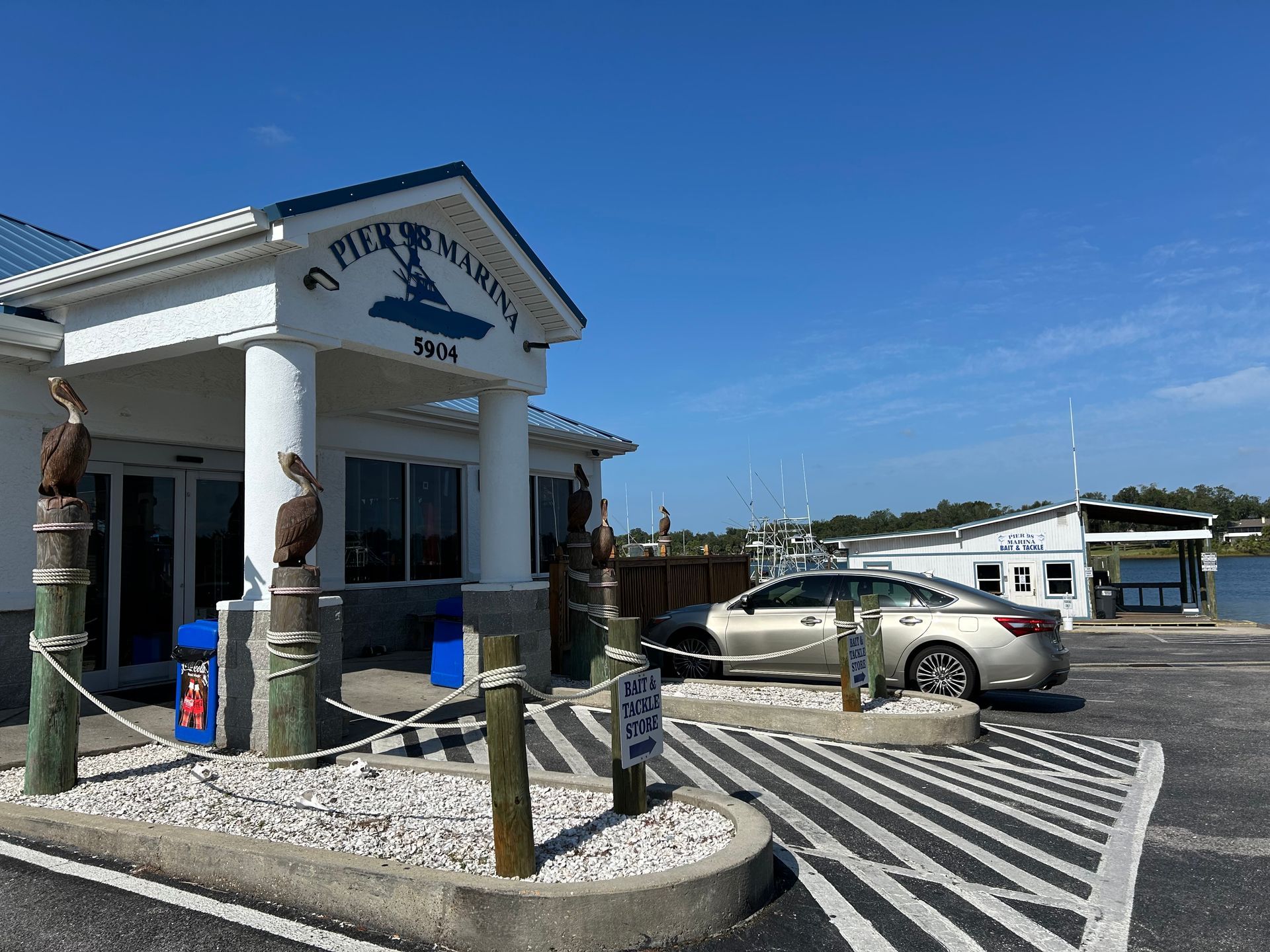
Callaway, FL, has been growing rapidly over the last decade, and many people in the area are dealing with outdated HVAC systems. For over 22 years All Star has kept Callaway comfortable at a price that won’t break the bank with affordable AC installations, competitive financing and a 100% satisfaction guarantee. Here’s the breakdown of AC replacement costs, and what to do to get the most out of your investment. Getting a New AC in Callaway: What to Expect for Costs The typical price range for a new air conditioner in Callaway is $4,000 – \$10,000 based on: 1. System Size 2–5 tons Cooling capacity, typical for homes (1 ton = 12,000 BTU). Oversized units waste energy; undersized systems struggle to cool. 2. SEER Rating 14–16 SEER : Budget-friendly and moderate efficiency. 18–20 SEER : More expensive to buy, but 30%+\% energy savings over time. 3. Brand & Features Premium brands (i.e. Trane, Carrier) keep rolling for 15+ years with service twice a year. Convenient features like smart thermostats, humidity control and Wi-Fi. 4. Installation Complexity Adding or modifying ductwork or upgrading electrical work will add to the labor bill. Cost Example : A 3-ton, 16 SEER air conditioner replacement is $6,500–\$8,000 in Callaway. Ways to Save on AC Replacement in Callaway 1. Choose the Right SEER Rating Callaway's climate and other cost factors make 16 SEER the optimal efficiency/price level compared to the other two tiers. 2. Explore HVAC Financing Options 0% APR for 12–24 months (on approved credit). Payments just $59/month . 3. Time Your Replacement Strategically Request installations for **fall or winter** and receive off-season discounts. 4. Maintain Your Current System Yearly tune-ups add 3–5 years of life to your AC, saving you $800+/year in repairs. 5. Leverage Rebates & Incentives Save $500 or more with federal, state and utility rebates for energy-efficient upgrades. A Superior Air Conditioning Is the Go-To Business for Callaway Homeowners 1. Transparent Upfront Pricing All prices are after ALL available rebates to dealer. 2. Flexible Financing Solutions Low-interest plans, and credit card payments can be arranged. 3. Lifetime Compressor Warranty Keep the “heart” of your system safe at no extra cost. 4. Certified, Experienced Technicians Knowledge of older homes and new construction. 5. 100% Satisfaction Guarantee 1 Year warranty on labor on all installs. Success story: Upgrades and Rebates in Callaway The Situation The 15 year old 12 SEER unit kept the Jameson's 2,200 sq. ft. home, requiring frequent repairs. Our Solution Put in a 3.5-ton Trane 16 SEER system (with a $500 utility rebate). Financed the $7,200 purchase at 0% APR for 18 months . The Results 30% decrease in energy bills (Save more than $50/month). Balanced cooling and no emergency repairs. FAQs: AC Replacement in Callaway, FL Q: How do I know when to replace my AC? A: If your system is more than 10 years old or you regularly make repairs, now is a good time to repair the unit so that you don’t face a breakdown in the summer. Q: Do you fill emergency positions? A: Yes! We install new systems 24/7, even in the midst of heatwaves. Q: What if I can’t pay for the new one right away? A: We offer easy, fixed monthly payments from 0% APR . Question: How long does it take to install it? A: We can perform most replacement in 1–2 day . Budget Friendly HVAC Replacement in Bay County Budget-Friendly Strategies Use existing parts (ducts, line sets) — savings are passed onto you. Mid-range efficiency (15–16 SEER) provides the best value. Smart thermostats for energy efficiency. Long-Term Savings Sealed ducts with aeroseal – no leaks and hot/cold spots. Coils are coated with corrosion-resistant material which lessens for prevention of damage from salt and sands in the air to promote unit longevity for coastal districts. Are You Ready to Enhance the Comfort of Your Callaway Home? An old AC system shouldn’t drain your budget or your comfort. We provide you with high quality installations that are custom designed for the Bay County climate at prices you can afford. Call Now: (850) 258-3225 Free Estimate: [asuperiorac.com](https://asuperiorac.com) (Show this ad to get 5% off your new AC system!) Cool, Save Money, And Have Peace Of Mind With A Veteran Owned Local Expert!
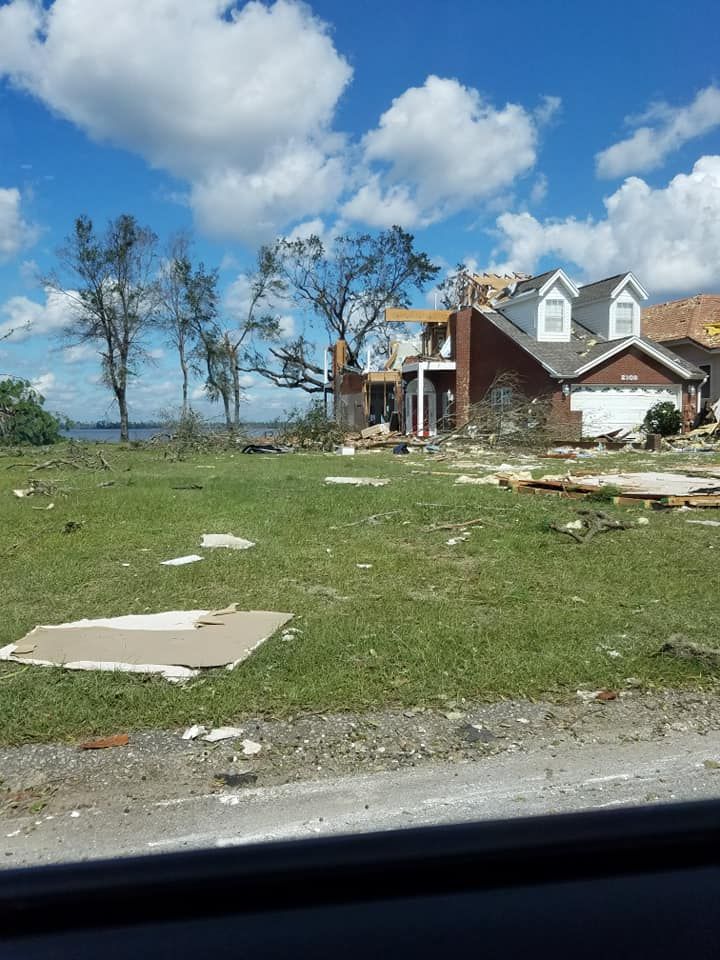
Hurricanes are a fact of life in Panama City Beach. Beyond roof shingles and fences, storms can quietly damage your HVAC system, leading to higher bills, poor air quality, and premature failures. Here’s what happens, what to check, and how to protect your equipment before and after a storm. How Hurricanes Harm HVAC Systems Salt spray + winddriven rain: Forces salty moisture deep into coils, electrical connections, and motors. Salt accelerates corrosion and reduces heat transfer efficiency. Flying debris: Dents fins, bends fan blades, and can puncture coils or damage the condenser cabinet. Flooding + storm surge: Submerges electrical components, contaminates oil, and can short control boards in the outdoor unit and air handler. Power issues: Lightning and grid instability cause surges that fry capacitors, boards, and compressors. Brownouts make motors overheat. Extended outages: High indoor humidity leads to mold risk, swollen doors/trim, and musty odors if the home can’t be dried out quickly. PreStorm Checklist (HomeownerSafe) Shut it down if flooding is likely: Turn the system off at the thermostat and the breaker before landfall. Clear the area: Remove furniture, grill covers, and loose items within 3–4 feet of the condenser. Document condition: Take photos of model/serial labels and overall unit condition for insurance. Surge protection: Install a whole home or unit level surge protector and verify your generator has a proper transfer switch (no back feeding). Filter & drains: Replace the filter and treat the condensate line so the system is ready to dehumidify when power returns. Avoid wrapping the condenser in plastic; it traps moisture and promotes corrosion. Use only manufacturer approved guards or hail screens if applicable. PostStorm Safety Steps 1. Visual check first: Look for standing water, oil stains, bent fan blades, crushed lines, or cabinet damage. 2. Rinse salt off coils: With power still off, gently hose the outdoor coil with fresh water from top to bottom. 3. Do not start a flooded unit: If water reached the base of the condenser or air handler, keep the breaker off and call a professional. 4. Listen & smell on restart: After power is stable and you’ve confirmed there’s no visible damage, restore power and listen for grinding, buzzing, or burning smells—then shut it off and call if anything’s abnormal. 5. Dehumidify quickly: Run AC in “Cool” with a moderate set point (74–76°F). If available, run a wholehome dehumidifier to pull RH below 55% and inhibit mold. LongTerm Storm Hardening for PCB Homes Elevated, anchored pads and hurricane tie downs Coastal-rated coils and anticorrosion coatings Unit level surge protection and locked disconnects Float/overflow safety switches on air handlers Duct sealing to prevent moist air infiltration Smart thermostats with remote humidity alerts (ideal for rentals/second homes) How A Superior Air Conditioning Company Helps Our coastal program combines storm ready installs, preventive maintenance, and post hurricane inspections. We clean and test coils, verify electrical integrity, measure temperature split/static pressure, and document findings for your records and insurer. If replacement is smarter than repair, we specify coastal ready systems engineered for Panama City Beach conditions. Have storm concerns—or need a post hurricane inspection? Contact A Superior Air Conditioning Company. We’ll protect your comfort, your equipment, and your peace of mind before the next storm season. Inspecting Indoor Air Quality After a Storm When storms hit the Gulf Coast, the biggest HVAC risk isn’t just mechanical—it’s indoor air quality (IAQ). Power outages, roof leaks, and flooding drive humidity up, invite mold, and spread contaminants through ducts. Use this guide to assess and stabilize IAQ safely after a storm. First 24 Hours: Quick Triage Safety first: If you suspect electrical hazards, gas leaks, or sewage contamination, stop and call a pro. If the HVAC or air handler was flooded, keep power OFF at the breaker and do not restart. Document water lines, wet areas, and any obvious damage for insurance. Step by Step IAQ Check 1. Measure humidity. Use a simple hygrometer; target ≤55% RH. Once utility power is stable, set the thermostat to Cool (74–76°F) with the fan on AUTO so the system can dehumidify. 2. Look, then smell. Check closets, behind furniture, around supply/return grilles, and near windows for spots, streaks, or musty odors. 3. Replace filters. Discard wet or clogged filters immediately. Consider MERV 11–13 only if your system can handle the added resistance. 4. Clear the condensate path. Confirm the drain pan isn’t overflowing; treat the line via the cleanout with a cup of white vinegar to deter algae. 5. Assess ducts. In wet attics or crawlspaces, flex ducts can wick moisture or disconnect. If you see standing water or collapsed runs, don’t operate until inspected. 6. Ventilate strategically. When outdoor air is drier than indoors, crossventilate for short periods. Otherwise, keep the home closed and focus on dehumidification. ShortTerm Air Cleanup Run portable HEPA purifiers in bedrooms and living areas. Rinse the outdoor coil with fresh water (power off) to remove salt spray. Avoid ozone generators and unproven fogging; they can irritate lungs and damage materials. When to Call a Professional RH won’t drop below ~60% after 24–48 hours. Visible mold larger than a small patch or persistent musty odor from vents. Flooded air handler, tripped breakers on restart, or ice on refrigerant lines. Sensitive occupants (asthma, elderly, infants) are in the home. How A Superior Air Conditioning Company Helps Our post storm IAQ service includes humidity/dew point measurements, temperature split and static pressure readings, coil and blower inspections, condensate cleaning, and duct leakage assessments. We provide documented findings, recommend whole-home dehumidifiers, rightsized filtration, and (when needed) professional coil cleaning and duct repairs as well as duct sealing with Aeroseal. We can also configure smart thermostat humidity alerts for second homes and rentals. Need an expert eyes on after the storm? A Superior Air Conditioning Company serves Panama City Beach, Panama City, 30A, Destin, Fort Walton Beach, and nearby communities. Book your post storm IAQ inspection today.

HVAC Emergencies in Downtown Panama City Whether you’re looking at an emergency call in a downtown Panama City cottage in the historic St. Andrews area or a high-rise overlooking Panama City near the Marina Civic Center, every minute matters when your system breaks down or gets damaged. At A Superior Air Conditioning, we strive to provide quick, dependable solutions to keep homes and businesses safe, comfortable, and functional. Downtown Panama City HVAC Emergencies Don't Wait – Neither Do We! Whether it’s the sweltering bomb cyclones of summer or a freak blizzard in winter, a malfunctioning HVAC system can be dangerous to our health and well-being. Service to Downtown Panama City for 15+ years. We've helped save the day with: Spring break midnight AC breaking. It’s so cold here! - Broken heating in old houses. Storm-flooded units in low-lying areas such as Millville. Common Downtown HVAC Emergencies 1. AC Breakdowns in Historic Homes Problem: Aging systems in 1920s bungalows can’t keep up with humidity, and the ductwork is outdated. Case Study: A cottage on Harrison Avenue lost AC during 100̊ weekend and mold grew. Our Fix: Temporary window unit, duct sealing, humidity-control system. 2. Commercial HVAC Failures Problem: Restaurants and stores on Beck Avenue are losing money and customers. Case Study* The AC stopped working at night at the Downtown Crab Shack during a busy Friday dinner service. Our Fix: Installed a new capacitor in 18 minutes saving $3,000 in lost revenue. 3. Storm-Related Damage Problem: Outdoor units that are flooded or power surges following summer storms. Solution : Immediate water extraction, as well as surge protection and electrical repairs. Why Spend Quality Time with Emergency Dentists in Downtown? Rapid Response Times 60 Minute-Emergency Service whether you’re an existing customer or it’s the first time you’ve had a problem, you can rely on iPlumb, LLC to rapidly dispatch a technician to your location. Covers: St. Andrews, Downtown Marina, Glenwood, Millville, and Cove Boulevard. Experienced Old and New Systems collapsed. Expert "Old" and "New" Systems. Historic Homes: Save character and update systems. High-Rises: Condo licensed units like The Legacy Tower. Storm-Ready: Salt-resistant components and surge protection. Transparent Rates 24/7 $129 Emergency Diagnostic Fee (credited to your repair). Most Repairs $200–$600 with up-front quotes. What to Do In Case Of HVAC Emergency 1. Shut Down the System: Limit more damage from electrical problems. 2. Issues to Rule Out Immediately: Tripped breakers? Frozen coils? 3. Contact Us Now: (850) 258-3225 - Assistance on the way. 4. Don’t Do It Yourself: You should leave dealing with refrigerant leaks and live wires to the experts. Emergency Services We Provide 24/7 AC Repairs Compressor replacements. Refrigerant leak repairs (EPA-certified). Thermostat malfunctions. Heating Emergencies Furnace ignition failures. Heat pump reversal problems on cold snaps. Critical System Components Replacements of capacitors and blower motor. Ductwork patching. Electrical wiring repairs. Storm Damage Support Pumping out water in flooded units. Post-power surge diagnostics. Customer Testimonials “Our art gallery went without heat at a winter event. -A Superior A Superior restored comfort in 2 hours. – Clara T., Harrison Ave. "They repaired our condo AC at midnight over spring break. Lifesavers!” –Mark R., Aqua Tower. Commercial HVAC Services in Panama City FL 24/7 Emergency Repairs Reduced Downtime Same day fixes on RTUs, aplit systems, and VRF. Planned Maintenance Programs Monthly/Quarterly Plans: Clean coils, inspect electrical, check refrigerant. Salt Air Resistant: Frequent rinsing and anti-corrosive finish. Replacement, Retrofits and Design Build Energy efficient replacements (ECM motors, VFDs, smart controls). Florida Building Code-compliant installations. Measurement of Indoor Air Quality & Humidity Solutions: Dehumidifiers for the whole home, air cleaners with UV light, MERV 13 + filters. Built for the Gulf Coast Stainless Steel and galvanized hardware to fight back salt corrosion. Why Businesses Choose Us LOCALLY & VETERAN OWNED: We strive for a clear and safe communication. Clear Pricing - We show you our costs, no hidden fees, photo and data reports. Code Compliance: Knowledge of multi-unit residential and commercial codes. No More Risking Downtime– Call Us Today! 24/7 Emergency Hotline: (850) 258-3225 Service Areas: Downtown Panama City, Millville, Cove Blvd and the surrounding communities. Exclusive Offer: Say “DOWNTOWN EMERGENCY” for $50 off repairs + free air quality check! Whether it’s historic homes or thriving businesses, we are your reliable HVAC source in Panama City.
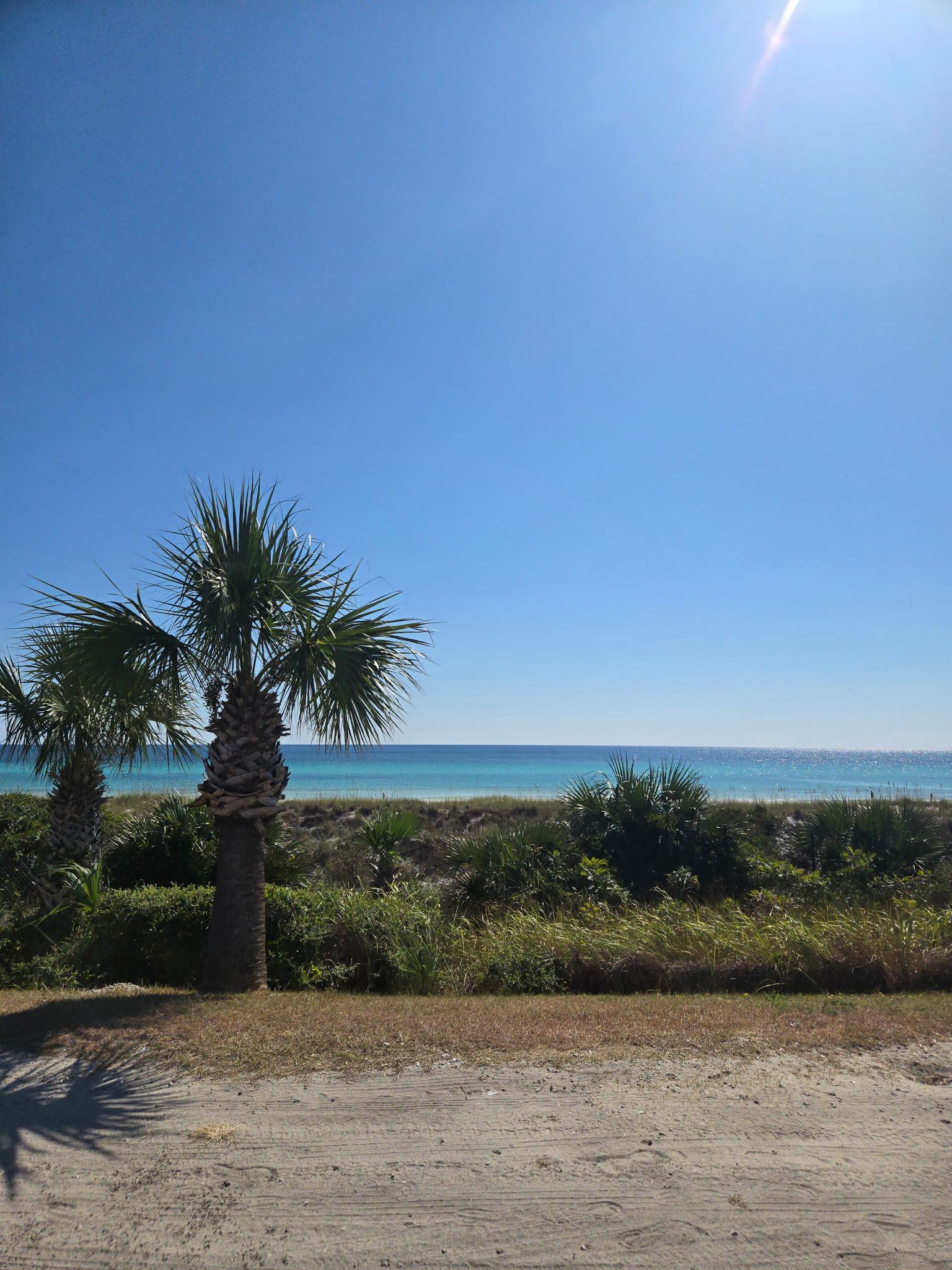
Life in Lower and Upper Grand Lagoon comes with beautiful waterfront views and coastal living – but with the sea air comes specific challenges for your HVAC system. We’re A Superior Air Conditioning and we’re proud to bring you solutions that are designed to meet the unique needs of the waterfront areas of Panama City. Here is how to protect your home’s comfort and efficiency. Salt Air and Your Grand Lagoon HVAC System 1. Coil Corrosion Salt particles can corrode the aluminum and copper coils of A/C systems, diminishing cooling ability and leading to refrigerant leaks. 2. Electrical Failures Salt buildup on wiring, fan motors and capacitors hastens end-of-life breakdowns. 3. Clogged Drain Lines Condensation loaded with salt mixes with dust, creating sludge that blocks drainage and exposes to the risk of water damage. 4. Rusted Components Metal shutters, chocolates, bolts and joints rust due to early decay for deteriorated durability. Impact: Salt air can reduce the lifespan of HVAC systems by 3–5 years and lead to expensive repairs. 7 HVAC Hints for Grand Lagoon Waterfront Homes 1. Schedule Coastal-Focused Maintenance Biannual tune-ups with anti-corrosion treatments and salt-resistant lubricants. 2. Add a Coil Guard or Coating Epoxy-coat or apply aluminum guards to outdoor condenser coils. 3. Upgrade to a Coastal-Ready System Trane XL18i Coastal: Includes salt resistant coils, powder painted enclosures and sealed electrical controls. 4. Rinse the Outdoor Unit Monthly Rinse condenser lightly with fresh water to eliminate deposits of salt ( Do not use high pressure ). 5. Optimize Landscaping Clear vegetation 2-3feet around outdoor unit to prevent the accumulation of debris and ensure air flow. 6. Add a Whole-Home Dehumidifier Keep 40–50% humidity to fight off mold and take some pressure off your AC. 7. Consider Ductless Mini-Splits Get rid of drafts caused by the conventional, stationary ductwork. Turn on and off rooms as required to save energy with IcyBreeze Zoned Cooling. Protecting a Home in Lower Grand Lagoon – A Case Study The Challenge The Sanchez family’s 15-year-old air conditioner was coping with salt corrosion and humidity in their beachfront home. Our Solution 1. Also put in a Trane XL18i Coastal (rust resistant) system. 2. Installed a coil protection guard and a whole-home dehumidifier. 3. Established twice-a-year salt repellent services. The Results Longer life span than a regular system: 3-5 years longer than a regular system. Saving More: Save 20% on your energy bill with 95W energy saving. Whole Home Comfort: Add central Honey well humidifiers to your whole home systems to maintain a proper, comfortable humidity level throughout your home. FAQ: HVAC Services for Grand Lagoon Waterfront Properties Q: How frequent should I be maintaining my HVAC system? A: Twice a year, pre-summer and pre-winter, to care for salt damage and humidity. Q: Can I use an AC unit indoors? A: Do not do it, place outdoor units on the north or east side of the dwelling, to the extant practical, to reduce exposure to salt spray. Q: Do you also provide 24/7 emergency service? A: Yes! We answer within 2 hours to bring back your comfort. Q: What if my system is already rusted? A: We’ll determine if it can be repaired, or advise on a replacement that’s built to endure coastal conditions. Coastal-Ready Air Conditioners: Designed with Grand Lagoon in Mind Key Features RESISTANCE TO CORROSION: Brass nuts and mild steel fasteners, paint coated coils and water repellent electrical enclosure. Humidity: Of compressors that work at multiple speeds, and dehumidifiers are protected. Smart Technology: Wi-Fi controlled thermostats that alert you to humidity and leaks. Installation Best Practices Manual J Load Calculations: The Right size for energy performance. Surge Protectors: Protect against power surges caused by storms. Raised Installation: Raise units off pads in flood areas. Maintenance Essentials Reduce Coils Salt Build Up: Quarterly Cleanings: Remove Salt Outdoor Coils. Drain Line Treatments: Stop algae and sludge from forming. Protect Your Grand Lagoon Home Now! Don’t allow salt air to reduce the life of your HVAC system. And trust A Superior Air Conditioning Panama City’s coastal HVAC specialists, to have a solution that will stand up to the challenges of Gulf living. Call Now: (850) 258-3225 Schedule Online: [asuperiorac. com/grand-lagoon-hvac](https://asuperiorac.com/grand-lagoon-hvac) Bring in This Ad and Receive 10% Off a Coastal Tune-Up! Relax and bathe in waterfront living with a system engineered for salt and sun and wind.

Panama City Beach delivers sun, sand, and unyielding humidity under its tropical climate. The average humidity level in Coral Springs is over 70% all year round, causing homeowners to be at high-risk for mold. At **A+ Superior Mechanical**, we offer preventive measures to protect your home and health. Understanding the Humidity Challenge Climate Factors Gulf Influence: Humid, warm air from the Gulf penetrates into homes, generating condensation on walls, windows, and HVAC systems. Storm Susceptibility: Storms and hurricanes introduce water intrusion risks, resulting in the increased growth of mold inside attics, basements and crawl spaces. Health Risks Mold exposure can cause allergies, asthma, respiratory infections — and worse in children, the elderly, and people with weakened immune systems. Hidden colonies of mold can lurk out of sight until the property or occupants suffer structural damage or health symptoms. Effective Humidity Control Techniques 1. Dehumidifiers Whole-Home Devices: Keep indoor humidity at 30-50%. Mobile Choices: These options are best for damp locations, such as in navigation bathrooms and laundry areas. 2. Ventilation Strategies Run kitchen and bathroom exhaust fans. Open windows for air exchange on low humidity mornings. 3. HVAC Maintenance Replace filters monthly. Two tune-ups per year are a way of optimizing moisture removal. 4. Seal Leaks Check your roofs, windows, and plumbing. Fill gaps with weatherstripping or caulk. 5. Gutter Maintenance Keep gutters clean and work to drain water away from your foundation seasonally. Mold Prevention Strategies 1. Routine Inspections Inspect crawl spaces, basements and under sinks for early signs of mold on a monthly basis. 2. Timely Repairs Resolve leaks or flooding in ** 24–48 hrs ** to avoid mold growth. 3. Mold-Resistant Materials Use mold-resistant paint, drywall and insulation when remodeling. 4. Professional Evaluations Post-storm examinations and air quality inspections to determine hidden hazards. Building Trust & Value by Offering Professional IAQ Insight Why IAQ Matters The air in our homes can be **2–5x more contaminated** than outdoor air(EPA). Key contaminants: VOCs emitted by paints, cleaners, and building materials. Mold spores in moist spots. Particulates such as dust and pollen. Building Trust Through Transparency In-depth reports pinpoint potential hazards including post-storm mold or VOC spikes. Solutions: UV purifiers, dehumidifiers, or smart ventilation. Upselling Advanced IAQ Solutions Couple evaluations with personalized updates: HEPA filtration for allergens. UV-C lights that kill germs. Take Your HVAC Services to New Heights with Profitable IAQ Bundles Why Bundle IAQ with HVAC? Tackle what's under the hood while in regular maintenance (dust and humidity). Make choices easier for the homeowner with prepackaged solutions. Top IAQ Enhancements 99.97% HEPA filtration: Traps 99.97% of allergens. UV-C Germicidal Lights: Kill mold in ducts. Smart Air Purifier: Pair with wi-fi thermostats for real-time monitoring. Recurring Revenue Opportunities Have seasonal packages available (like a “Spring Allergy Defense” with duct cleaning) Hidden Dangers in Seaside Homes: Allergens & VOCs Coastal Allergies Mold & Mildew: Grows in damp places — look in attics and HVAC systems. Pollen: Enter from open windows, worse during the rainy season. Dust Mites: They live in humid bedding and carpets. VOC Threats Sources: Paints, adhesives, synthetic flooring. Risks: Headaches, respiratory irritation, long-term health problems. Proactive IAQ Management Ventilate: Employ exhaust fans and open windows judiciously. Use low-VOC products: Look for environmentally friendly paints and materials. Keep Humidity in Check: Use dehumidifiers to maintain levels under 50%. Make Your Coastal Comfort Secure! You don’t have to allow humidity and mold to ruin your Panama City Beach home. A Better Mechanical provides customized services for coastal issues. Call Now: (850) 258-3225 Schedule an IAQ Assessment: [asuperiorac.com](https://asuperiorac.com) Do it today: Say PCB IAQ and **save 10%** on whole-home air quality upgrades! Enjoy peace of mind and add value to your home with Florida’s most trusted HVAC & IAQ company.
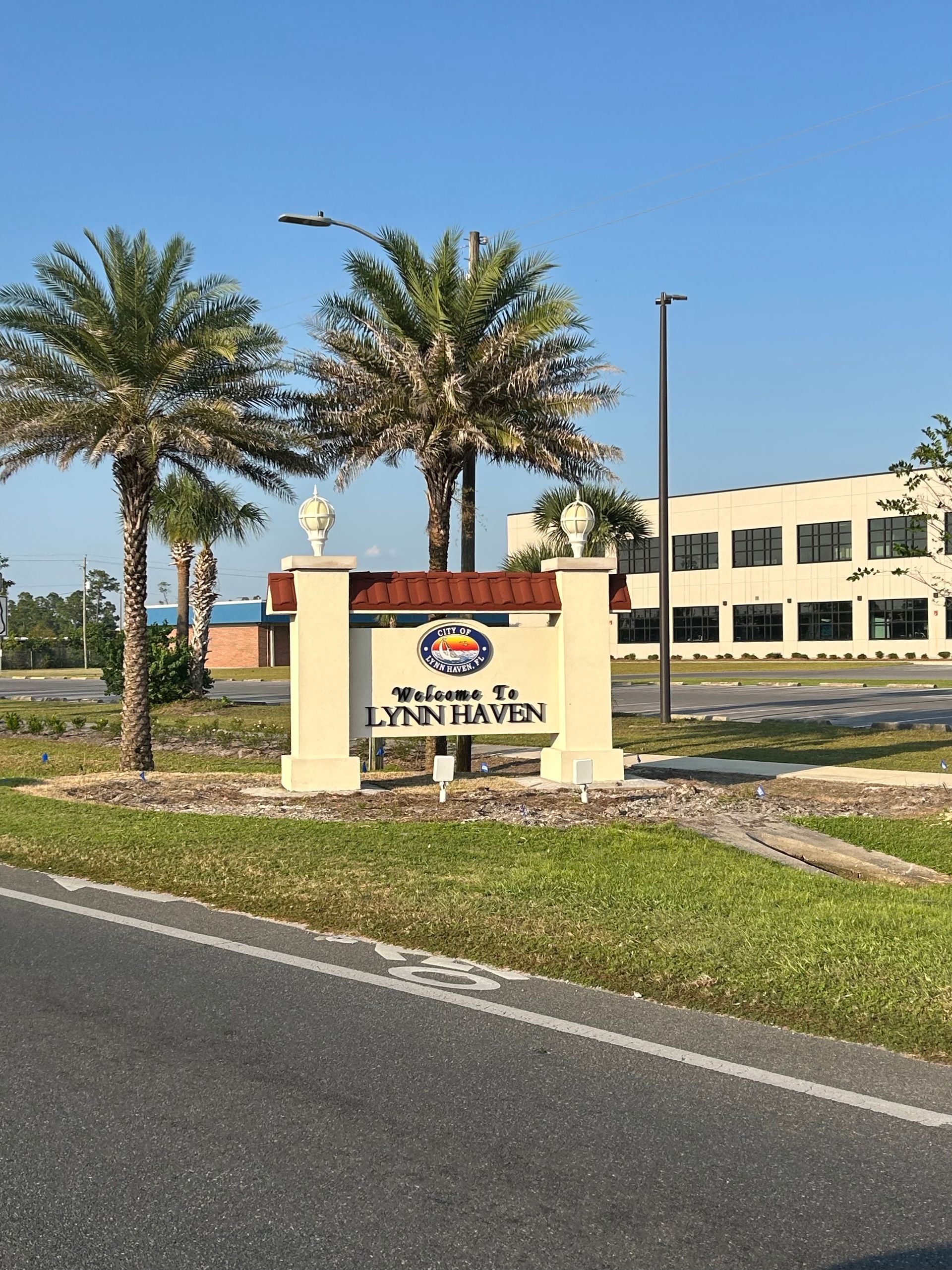
The historic beauty you will find in Lynn Haven has a downside: poor indoor air quality (IAQ) in older homes. From musty smells to mold, dated HVACs and Florida’s humidity set us up to be uncomfortable and unhealthy. You’ve Found the Right Place for a Healthy and Comfortable Home At A Superior Air Conditioning , our focus is making our Lynn Haven historic homes comfortable and safe for your family. Here’s how: How Older Lynn Haven Homes Are Hindered By Air Quality Older Lynn Haven homes seem to be very complicating when it comes to protecting indoor air quality. 1. Inadequate Ventilation Issues : Ductwork that is either the wrong size or leaking. Air leaks at windows/doors which allow outdoor pollutants inside. No kitchen/bathroom vent fans. Outcome : Stale, stagnant indoor air. 2. Obsolete HVAC Systems Issues: Filters dust, dander, allergens and more. Ineffective dehumidification leading to mold. Outcome: Stuffy air and a consistently moist dampness. 3. Elevated Indoor Pollutants Sources: Lead-based paint (pre-1978 homes). Asbestos in insulation or flooring. Carpets and furniture that are off-gassing VOCs. Result: Long-term health risks of toxic exposure. 4. Uncontrolled Humidity Issues: Window AC units not controlling moisture. Humidity levels exceeding 50–60%. Result: Mold, dust mites, clamminess. 5 Remedies to Enhance IAQ in Historical Lynn Haven Residences 1. Upgrade Your HVAC System Options: **High Eff Units**: SEER 16+ systems with advanced filtration. **Variable-Speed Motors**: Even airflow and reduces humidity. **Smart Thermostats**: Automatically control the temperature and humidity. 2. Enhance Ventilation Strategies: Caulk or use weatherstripping to seal air leaks. Apply whole-house exhaust fans or heat recovery ventilators (HRVs). Install bathroom/kitchen exhaust fans to vent moisture and odors. 3. Add Air Purification Technologies: HEPA Filters: Are capable to remove 99.97 percent of particles (above 0.3 microns). UV Germicidal Lights: Destroy mold, bacteria, and viruses in your ducts. Carbon Filters: Can remove VOCs and odors. 4. Control Humidity Tools: Whole-House Dehumidifiers: Keep between 30 and 50 percent humidity. Hybrid HVAC Systems: Integrate cooling and dehumidification. Smart Sensors: Notify you of high humidity spikes. 5. Switch to Eco-Friendly Products Tips: Paint with low-VOC paints and clean with non-toxic cleaning supplies. Swap carpets for hardwood or tile, which are less likely to trap allergens. Case in Point: Making Over the IAQ of a 1940s Bungalow The Problem An older HVAC system and lack of ventilation in an historic front-porch Lynn Haven home had resulted in mold, stale odors, and asthma attacks. Our Solution Replaced with a ** high efficiency HVAC ** with HEPA Filter. Patched blowing air leaks and included ** whole-house exhaust ventilation **. What we did: Installed the ** Whole Home dehumidifier ** and the ** UV Air Purifiers **. The Results **30% lower energy bills** . Mold and musty odors are a thing of the past. The homeowner’s child had less severe asthma symptoms. Why Select A Superior Air Conditioning for IAQ Upgrades? 1. Expertise in Historic Homes Restore and modernize with an eye on architectural integrity. 2. Comprehensive IAQ Strategies Tailor plans for ventilation, humidity and pollutants. 3. Energy-Efficient Upgrades Receive rebates on ENERGY STAR® systems. 4. Certified IAQ Specialists NADCA-certified professionals who have received training on the most current duct cleaning and HVAC restoration procedures. FAQs: How to Improve IAQ in Older Homes in Lynn Haven Q: What Does a Whole-Home IAQ Upgrade Cost? A: The average project is between **\$3,000–\$7,000** depending on home size and solutions. Q: Can I improve my IAQ slowly over time? A: Yes! We develop phased plans based on your budget and priorities. Q: Are IAQ upgrades adding value to the home? A: Absolutely. The modern HVAC and air purification are strong selling points. Q: How frequently should IAQ systems be maintained? A: Why Annual Maintenance is Required It ensures air quality and peak performance. Keep Your Lynn Haven Home More Comfortable Today! Make your vintage home a healthier haven with local IAQ solutions designed for you. Call Now: (850) 258-3225 Free IAQ Consultation: [asuperiorac.com/lynn-haven-iaq](https://asuperiorac.com/lynn-haven-iaq) Tell them “Lynn Haven IAQ” to Receive 10% Off Your Indoor Air Upgrades. No more musty air, just fresher, healthier air!

